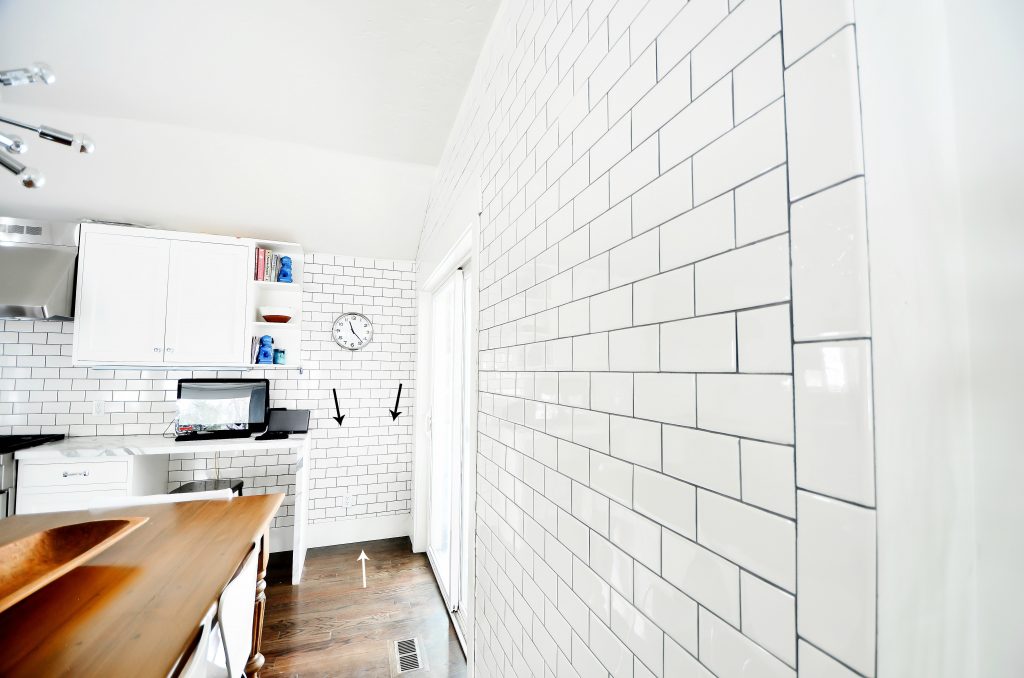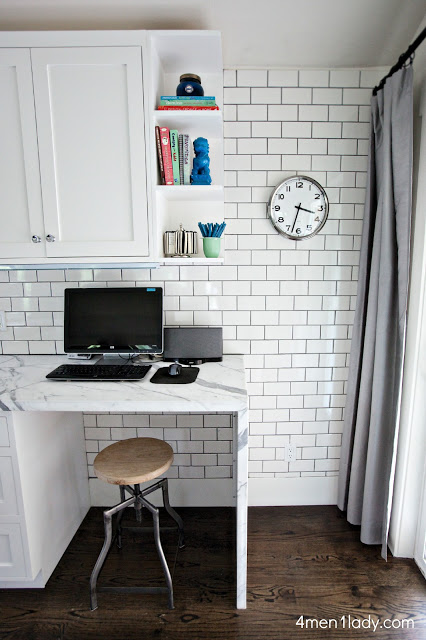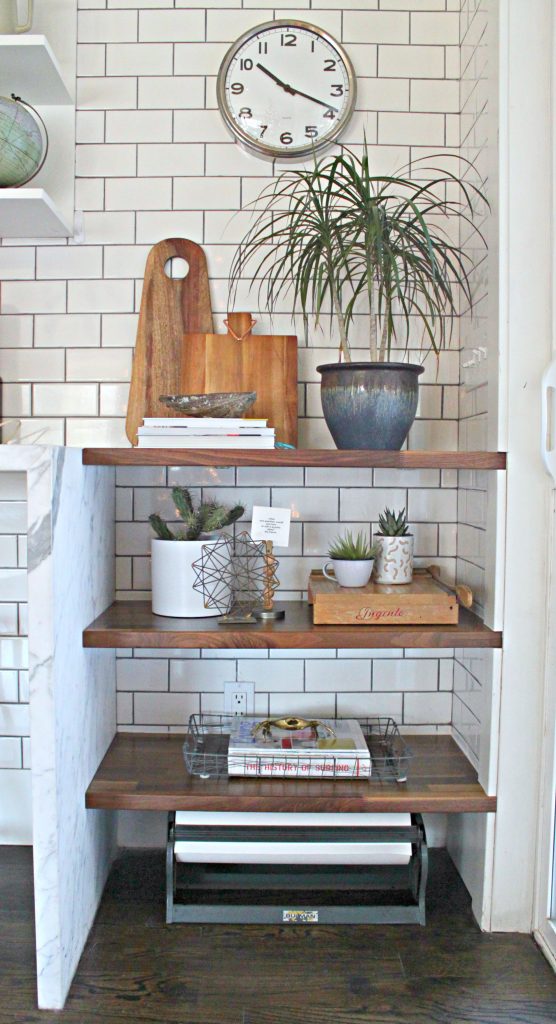Every home has “tricky spots”. I also call them dead spots.
They are places where you can’t do a whole lot with but they are valuable real estate.
I’ve had few of them in this home and had to get creative.
There was this awkward little corner in my son’s room.
Then there was this big empty wall in our kitchen.
The latest little makeover we’ve been working on is in our kitchen/dining room/office.

Yes this little corner of our house does triple duty as our dining room, kitchen and office.
When we first remodeled the kitchen I would have loved to run the cabinets all the way to the sliding door. However, the existing sliding door was placed so the cabinets would sit about 6 inches into the door so we had to end them short. Such a shame because it left a dead space where storage is so valuable. Over the years I tried furniture pieces but they never looked right.
Remember this plumbing pipe shelves project?
I wanted something more permanent and custom looking.

There is a lot of white going on in our kitchen. Wood would warm it up and give nice contrast so I partnered with Craft Art Countertops and had Walnut butcher block shelves made that would go perfectly in that little spot. You may remember I used the same butcher block counters as shelves and a vanity in our basement family room and bath remodel. I’ve seen several types of butcher block counter material (in fact I even have IKEA’s butcher block counters in our basement apartment) and Craft Art’s are BY FAR the best. Not even on the same playing field.
Here they are installed…

I was terrified about installing these in to the tile and marble waterfall but my own Chip Gaines (aka brother-in-law, Handy Randy) came to the rescue and got it done like it was nothing.

Exciting news…Craft Art will launching a new line through Home Depot in January called CA Basics by Craft-Art. Keep an eye out.
*Disclosure: I received material only to use and review in my own home.*




 Hey there! I’m Michelle; I’m an Passionate DIY’er and in constant pursuit of how to bring beauty to my house full of men (3 boys + 1 hubby). Stick around and see what I’ve got up my hard-working sleaves!
Hey there! I’m Michelle; I’m an Passionate DIY’er and in constant pursuit of how to bring beauty to my house full of men (3 boys + 1 hubby). Stick around and see what I’ve got up my hard-working sleaves!
Michelle: Thinking about creating a dining room table base with 1 1/2″ black iron pipe and fittings, as illustrated in one of your blog posts. Do you happen to know how much length I should add to my measurements for malleable T connectors? That is, if I use a T to connect two 10″ pipes, how long will the final assembly be? (10″ + 10″ +? =). Same question with the flanges. If I add those, how much height will they add to the final assembly?
Thanks!
Jeff